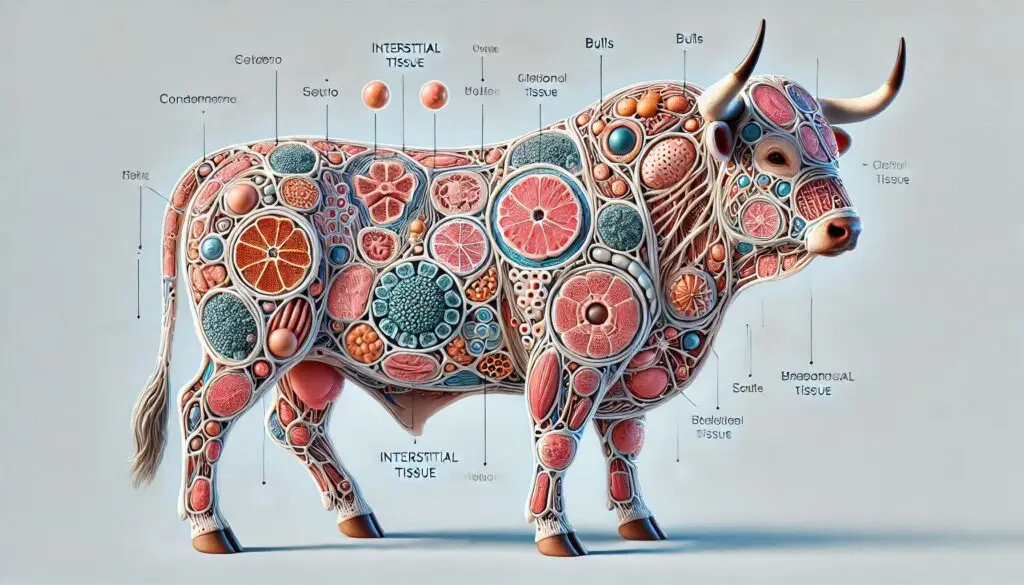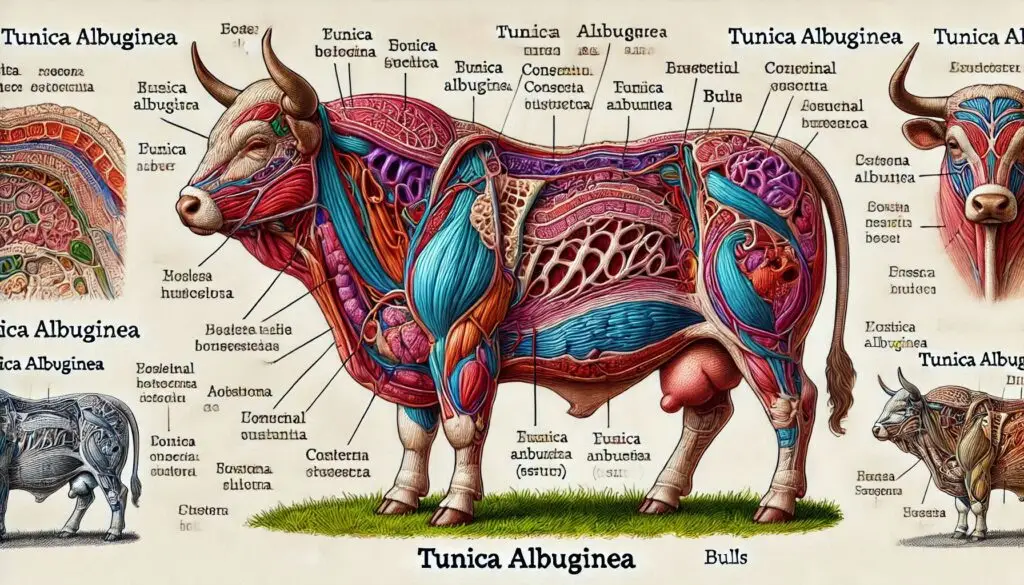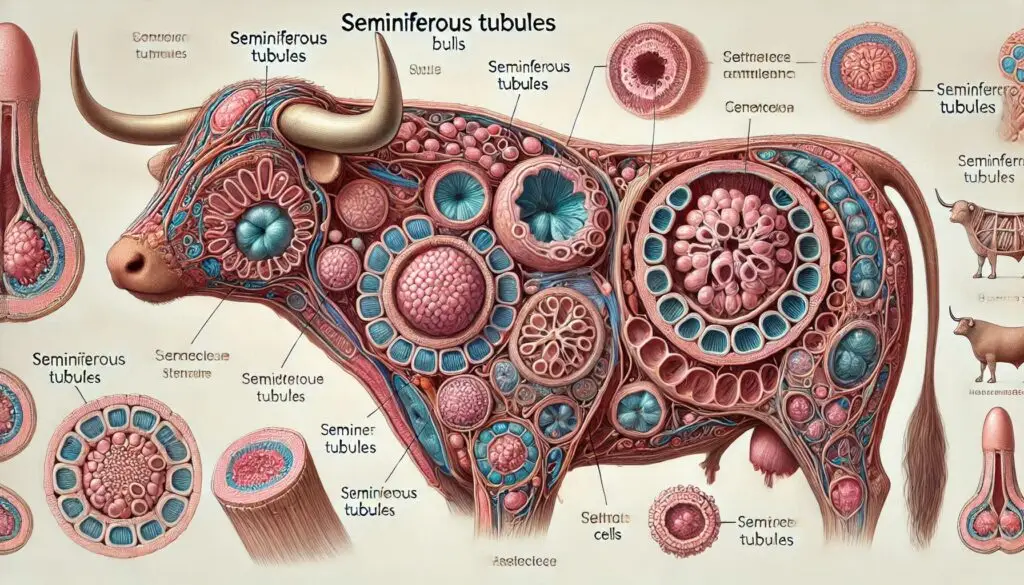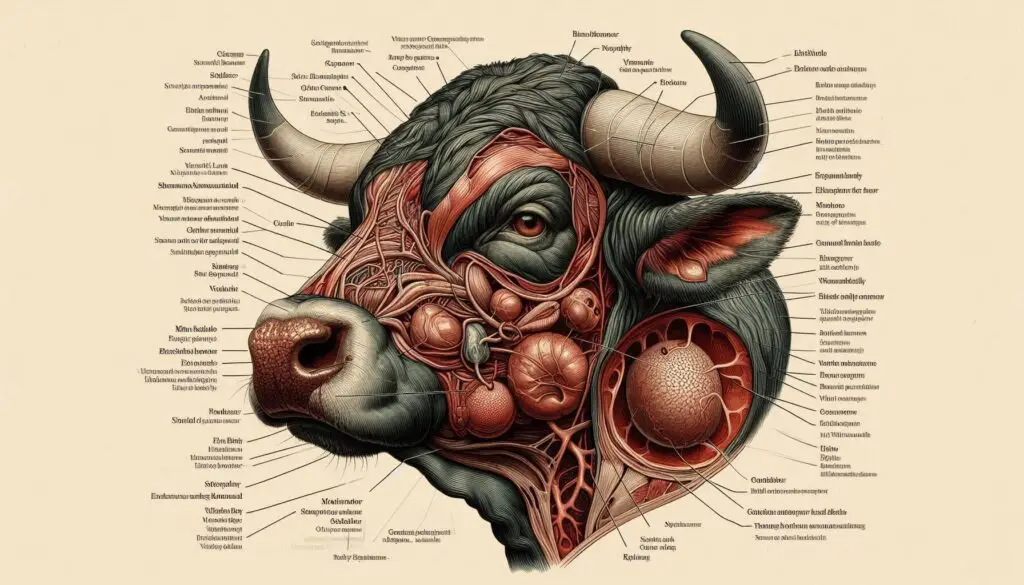Interstitial Tissue in Bulls

Introduction
The interstitial tissue in bulls plays a vital role in their reproductive health. This specialized tissue surrounds the seminiferous tubules within the testes. It consists primarily of Leydig cells, blood vessels, and connective tissues. Understanding this tissue’s structure and function is crucial for comprehending bull fertility and overall reproductive physiology.
Importance of Interstitial Tissue
The interstitial tissue is not just a supportive structure; it actively participates in hormone production and regulation. Leydig cells, located within this tissue, are responsible for producing testosterone. This hormone is essential for spermatogenesis and the development of male secondary sexual characteristics.
For more detailed insights into testicular anatomy and function, you can refer to resources like PubMed or ScienceDirect.
Structure of Interstitial Tissue
Leydig Cells: The Hormone Producers
Leydig cells are the stars of the interstitial tissue. These cells have a polygonal shape and are organized into clusters. They contain numerous lipid droplets and smooth endoplasmic reticulum, which are critical for steroid hormone synthesis.
Functions of Leydig Cells
Leydig cells produce testosterone in response to luteinizing hormone (LH) from the pituitary gland. This process is vital for maintaining male reproductive functions. Testosterone influences various physiological processes, including:
- Spermatogenesis: The production of sperm within the seminiferous tubules.
- Sexual Behavior: Testosterone affects libido and mating behaviors.
- Physical Characteristics: It contributes to muscle mass and bone density.
For further reading on Leydig cell function, check out ResearchGate for scholarly articles.
Blood Vessels: The Nutrient Supply Lines
The interstitial tissue is rich in blood vessels. These vessels supply oxygen and nutrients to the Leydig cells and seminiferous tubules. They also play a significant role in hormone transport throughout the body.
Importance of Vascularization
The extensive vascular network ensures that Leydig cells receive adequate support for testosterone production. It also helps maintain a stable environment for spermatogenesis. Disruptions to this vascular supply can lead to fertility issues.
Connective Tissue: Structural Support
The connective tissue within the interstitial space provides structural integrity. It consists mainly of collagen fibers and fibroblasts. This tissue supports the overall architecture of the testis.
Role of Connective Tissue
While connective tissue may seem passive, it plays an essential role in maintaining testicular structure. It also contains immune cells that help protect against infections.
Functionality of Interstitial Tissue
Hormone Production and Regulation
The primary function of interstitial tissue is hormone production. Leydig cells synthesize testosterone, which regulates many aspects of male reproduction.
Feedback Mechanisms
Testosterone levels are regulated by feedback mechanisms involving the hypothalamus and pituitary gland. When testosterone levels are low, the hypothalamus releases gonadotropin-releasing hormone (GnRH). This stimulates the pituitary gland to produce LH, which then prompts Leydig cells to produce more testosterone.
Support for Spermatogenesis
Spermatogenesis occurs within the seminiferous tubules but relies on signals from interstitial tissue. Testosterone plays a crucial role in this process by promoting the maturation of sperm cells.
Interaction with Sertoli Cells
Sertoli cells, located within the seminiferous tubules, support developing spermatozoa. They rely on testosterone from Leydig cells for proper function. This interaction highlights the importance of interstitial tissue in overall testicular health.
For more on spermatogenesis, visit NCBI.
Pathological Considerations
Common Disorders Affecting Interstitial Tissue
Various conditions can affect interstitial tissue health in bulls, leading to fertility issues. Understanding these disorders is crucial for managing bull reproduction effectively.
Inflammation and Infection
Inflammation can occur due to infections or autoimmune responses. Conditions like orchitis can severely impact testicular function by damaging Leydig cells or disrupting blood flow.
Tumors and Neoplasia
Leydig cell tumors can develop within the interstitial tissue. These tumors may lead to excessive testosterone production or disrupt normal hormonal balance.
For insights into testicular tumors, you can refer to Cancer.gov.
Clinical Signs of Interstitial Tissue Disorders
Bulls with interstitial tissue disorders may exhibit various clinical signs:
- Reduced Fertility: Difficulty achieving pregnancy with females.
- Scrotal Enlargement: Swelling may indicate underlying pathology.
- Behavioral Changes: Altered libido or mating behavior can occur due to hormonal imbalances.
Recognizing these signs early can aid in diagnosis and treatment.
Diagnostic Approaches
Veterinary Examination Techniques
Veterinarians use several methods to assess interstitial tissue health:
- Physical Examination: Inspecting scrotal size and consistency.
- Ultrasound Imaging: Evaluating testicular structure and blood flow.
- Hormonal Assays: Measuring testosterone levels to assess Leydig cell function.
For more information on veterinary diagnostics, check out resources like Veterinary Clinics.
Laboratory Tests
Laboratory tests can provide valuable insights into hormonal profiles:
- Blood Tests: Assessing serum testosterone levels.
- Semen Analysis: Evaluating sperm quality and quantity.
These tests help determine if interstitial tissue disorders are present.
Treatment Options
Medical Management Strategies
Treatment options depend on the underlying cause of interstitial tissue disorders:
- Antibiotics: Used for infections affecting testicular health.
- Hormonal Therapy: Administering hormones to restore balance if necessary.
- Anti-inflammatory Drugs: Reducing inflammation can improve overall testicular function.
For detailed treatment protocols, consult veterinary textbooks or articles from Wiley Online Library.
Surgical Interventions
In cases involving tumors or severe structural damage, surgical intervention may be necessary:
- Orchiectomy: Removal of one or both testes may be indicated in severe cases.
- Tumor Resection: Surgical removal of neoplastic growths may restore normal function.
Conclusion
The interstitial tissue in bulls is essential for reproductive health. Understanding its structure, function, and potential pathologies allows veterinarians and breeders to manage bull fertility effectively. By recognizing signs of disorders early and employing appropriate diagnostic techniques, we can ensure better reproductive outcomes for bulls.
More from Veterinary Anatomy:
Epithelial Tissue






Responses